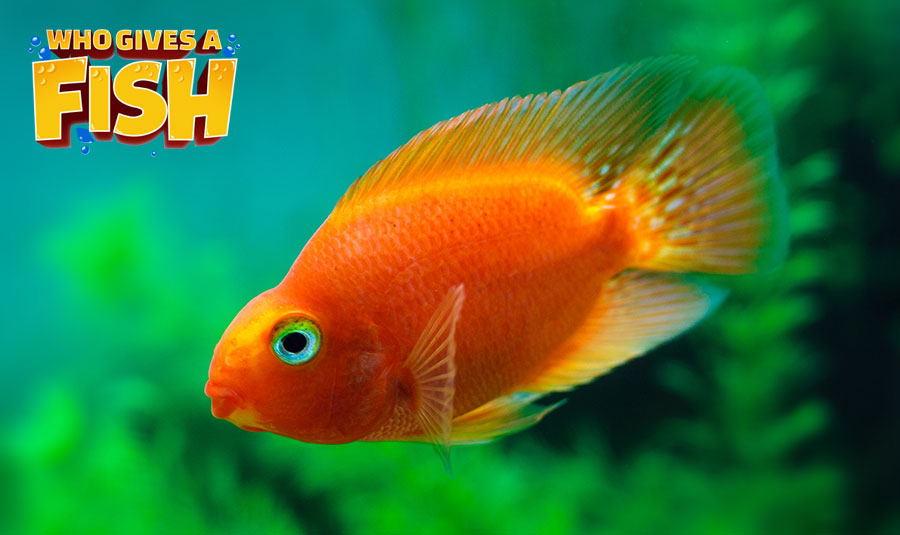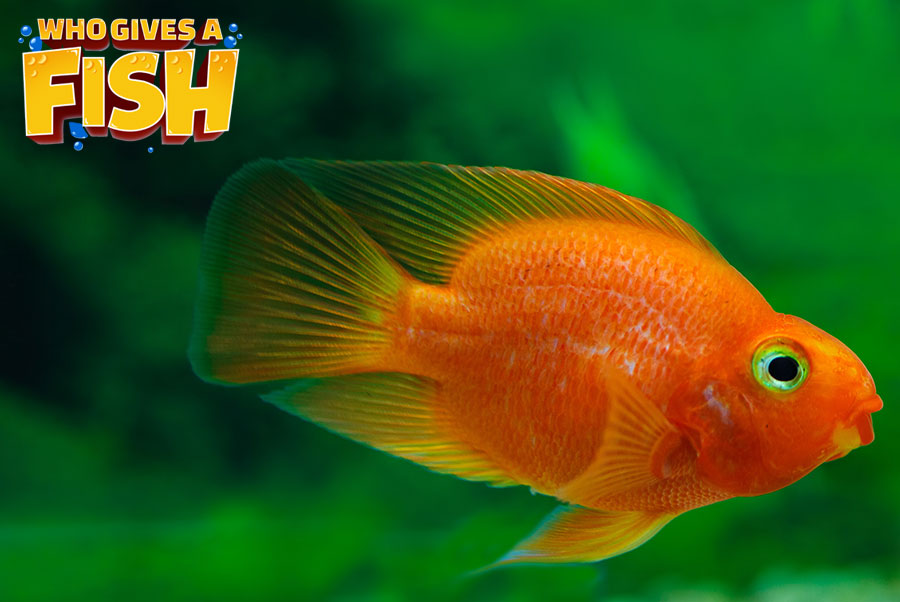Blood Parrot Cichlid
The Blood Parrot Cichlid is a unique looking Cichlid that has been developed through hybrid breeding within the hobby. They are not found in the wild.
Also known as the Bloody Parrot, Blood Parrotfish, and the Blood Parrot, they have an odd shape due to the crossbreeding. Their mouths are very small and the beak like shape is thought to have influenced the fishes name. It is thought to be a combination of both South and Central Amercian Cichlid breeds.
- Experience Level: Beginner
- Hardiness: Moderate
- Minimum Tank Size: 30 G (115 L)
- Maximum Size: 8 in (20 cm)
- Temperament: Peaceful
- Temperature: 70 – 82° F (21.1 – 27.8° C)
- pH Range: 6.5 – 8.0
- Water Hardness: 2 – 25 dGH
- Diet: Omnivore
Table of Contents
Introduction
Aquarium Setup
Difficulty
Feeding
Breeding and Social
Cichlids commonly interbreed while kept in captivity, often with closely related breeds. When in full breeding mode, these fish can respond to other species opposite sex in order to spawn.
Given the interbreeding that takes place within the hobby, there are many different variations in color of the Blood Parrot Cichlid, which include, but are not limited to shades of blues, pinks, reds, purples and oranges. Depending on the crossbreed, these can often be sold or referred to under different names such as the Jellybean Parrot, etc.
Like most Cichlids, this species can become territorial, although are generally considered as a peaceful fish in a community aquarium. They generally leave most aquarium plants alone, and prefer plenty of hiding spaces in your rock work and substrate.
These fish should not be confused with the Parrot Cichlid Hoplarchus psittacus which is another freshwater cichlid from South America that is quite aggressive. They also have no relation to the saltwater Rivulated Parrotfish Scarus rivulatus (previously Callyodon fasciatus). There is also another popular cichlid hybrid called the Flowerhorn Cichlid. It too is very attractive but much difference in appearance than these Parrotfish.
Sometimes the young Blood Parrot is confused with the young Flowerhorn Cichlid, however the differences are clearly determined once the fish begins to mature.
Aquarium Setup
While it is recommended to have at least 30 gallons for this fish, you will need to upgrade once they mature and should consider a minimum of 50 gallons if kept in a community tank. They will also need this extra volume once they have matured as they can grow up to 8 inches.
High quality water filtration is essential, as is with all Cichlids given their bioload. Large canister filters do well in capturing the free moving detritus and waste, and provide ample filter media for beneficial bacterial colonies. They prefer a weak to moderate flow of water, and do not appreciate high water flow.
Low to moderate lighting is preferred and they prefer a dark substrate (this also makes their colors really “pop”). They enjoy digging, so finer substrates such as sand or very fine gravel are best. Provide a lot of hiding places while ensuring they have good areas of space to swim openly.
The Blood Parrot Cichlid has been known to live for up to 10 years.
Blood Parrot Cichlid Aquarium Guide
- Minimum Tank Size: 30 G (115 L) although 50 G is more suitable.
- pH Range: 6.5 – 8.0
- Water Hardness: 2 -25 dGH
- Temperature: 72 – 82° F (21.1 – 27.8° C)
- Lighting: Low to Moderate.
- Substrate: Fine, dark substrate.
- Brackish: No
- Water Flow: Low to moderate
- Tank Region: Often hides around the bottom/middle, but will swim in all regions.
Difficulty
The Blood Parrot Cichlid is fairly easy to look after and is moderately hardy. Newbies to the hobby should not have any problems in caring for this species, provided they keep up proper tank maintenance and feeding. As these fish have very small mouths, using small, fine foods and soaking pellet based foods before feeding will assist the fish in eating.
As with most Cichlids, this breed will create a lot of bioload, especially later into it’s life.
Feeding
They are not fussy eaters and will take most foods, although meaty, high protein foods should be limited to once or twice a week. Such foods include brine shrimp and blood worms. Larger specimens will eat smaller fish such as guppies, mollies and goldfish so be careful about introducing other small fish into your tank. Even though their mouths are small, if they can fit a fish in there, they will!
They also strive on high quality Cichlid pellets and flake food, that contains Spirulina and B-Carotene.
Blood Parrot Cichlid Feeding Guide
- Diet: Omnivore
- Frequency: 2 – 3 times daily
- Pellet Foods: Yes (soak in water first to soften)
- Flake Foods: Yes
- Live Foods: Yes (take care of your smaller fish that will fit in their mouth)
- Meat Foods: Yes 1-2 times per week
- Vegetable Foods: Yes, most of diet
Breeding
Given the crossbreeding and different variations of this breed, it can be difficult to identify the difference in sexes. It has been reported that the male fish can develop a more red/pink coloration under his throat and around his gills when spawning.
While these are bred commercially within the hobby, they can be difficult to breed at home. Two Blood Parrot Cichlids cannot breed together, and will breed only with a fish that has not been crossbred. In such cases of no appropriate species in your tank, the eggs will be infertile and become food/waste within the tank.
Social
The parents of your particular Blood Parrot Cichlid will determine it’s temperament. They are usually a peaceful fish that is shy and most of the time can be kept in community aquariums. They can be territorial and won’t do will with aggressive Cichlids.
Fish that they will usually always do well with include, Plecos, Angelfish, Kuhli Loaches, Livebearers, Tetras and other peaceful Cichlids.



